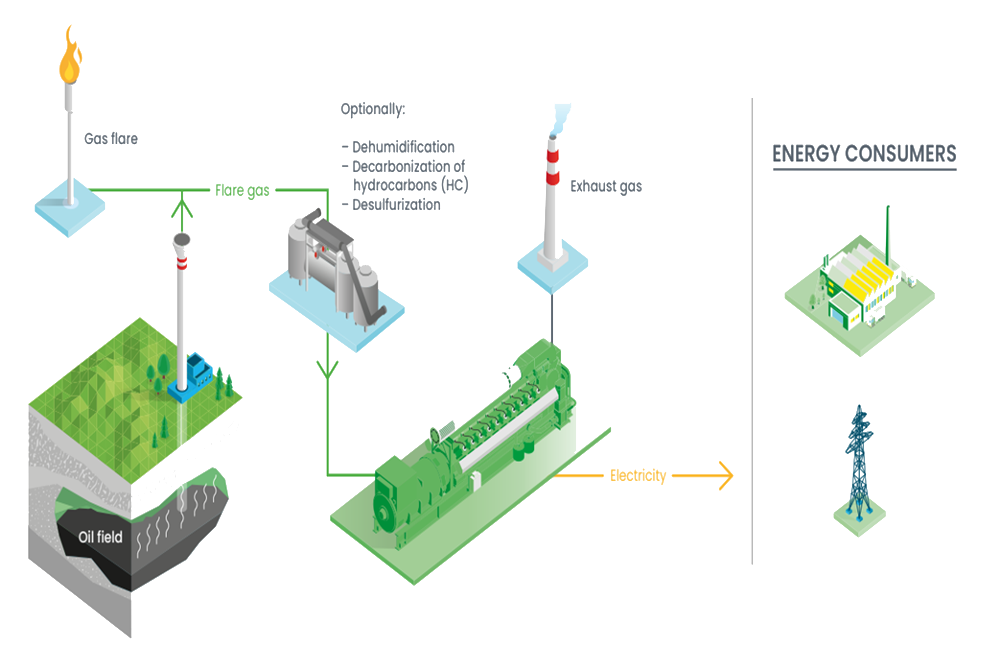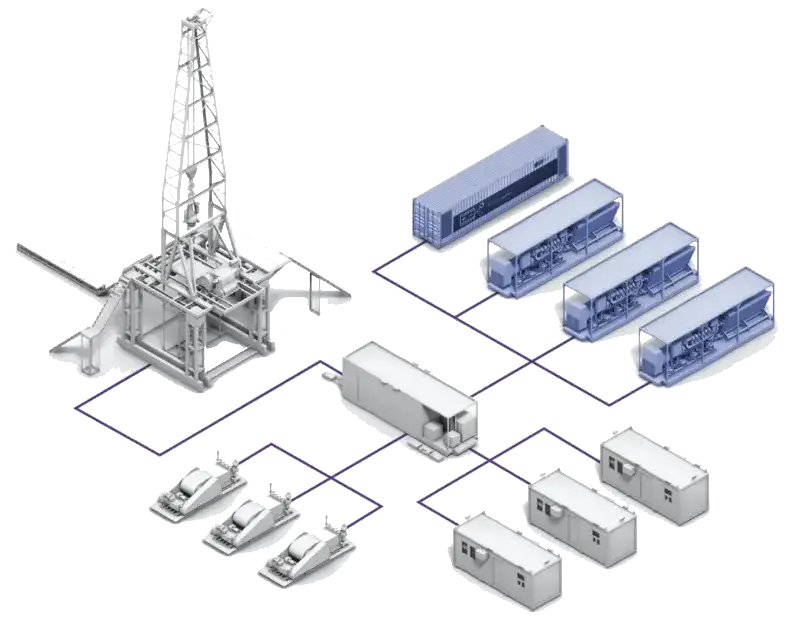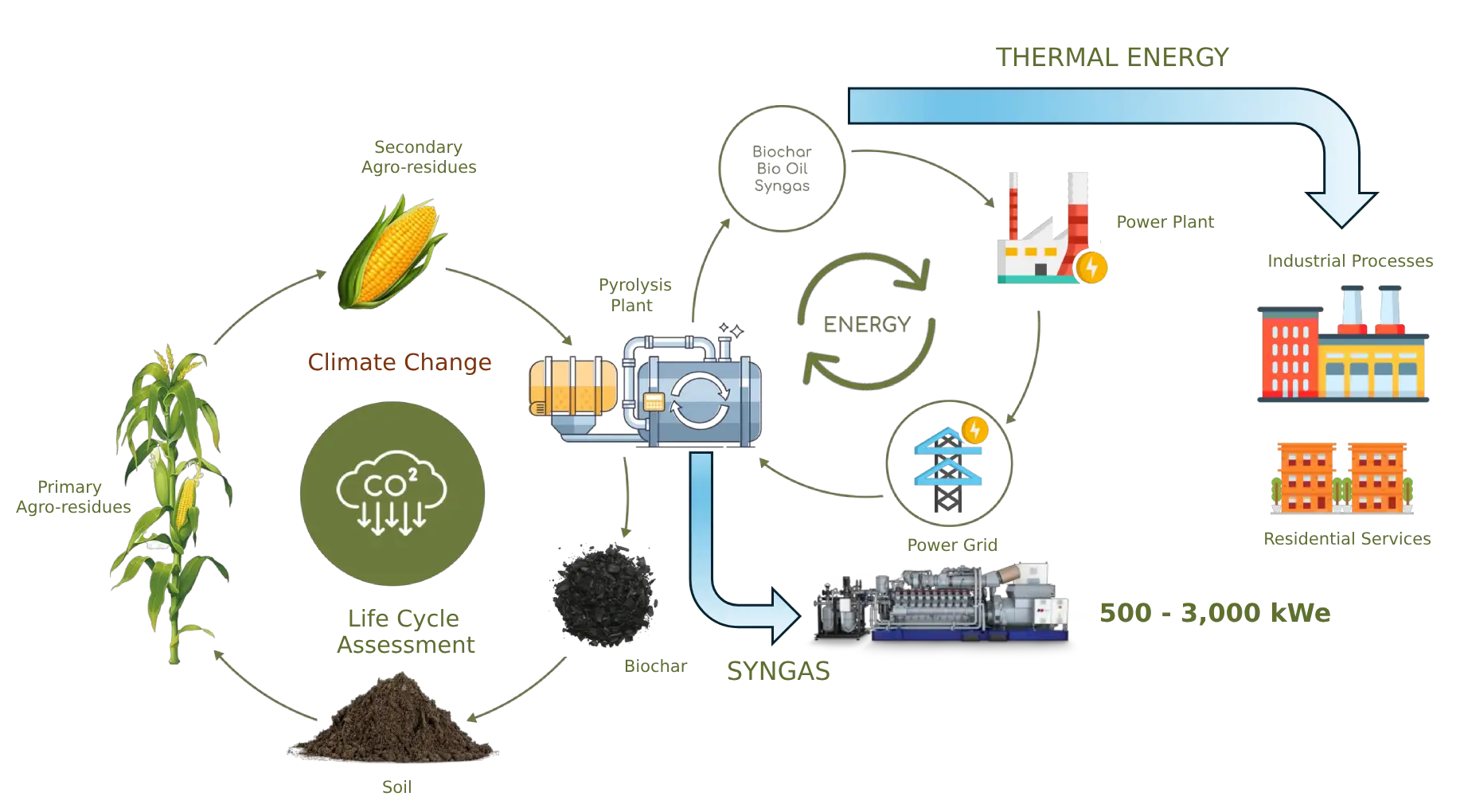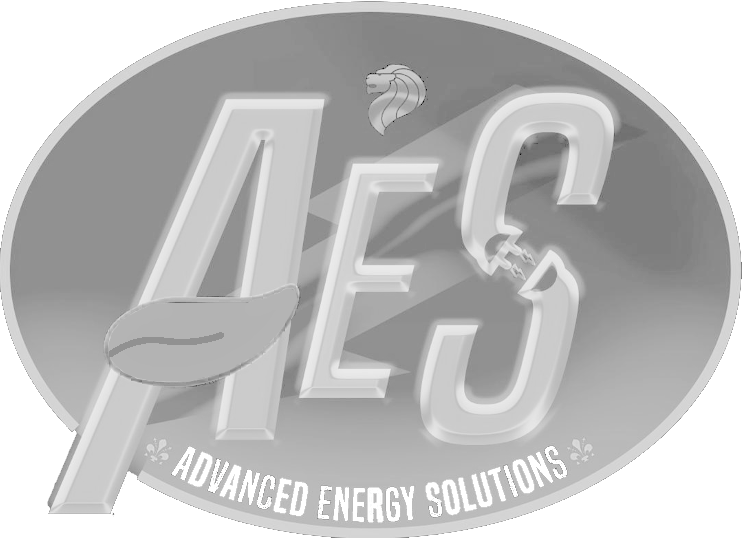Solutions
Solutions
An overview of some of our key solutions.
Flare Gas to Power
Flaring of associated gas from oil wells and excess gas from gas processing units/oil refineries is one of the most critical resources of greenhouse gas emissions to the atmosphere. In addition to environmental impacts, burning flare gases having high heating value results in considerable economic losses.
Our solutions are designed to adapt to different sources of flare gas and after treatment it can be used in a gas generator to produce electricity in a cleaner and more sustainable way.

Power Generation & Energy Efficiencies
All our packages are customized following standard oil and gas and industrial general specifications, with eco-friendly H2 and biogas/syngas powered solutions.
Gas engine generators utilizes natural gas, biogas and an eco-friendly solution for a hydrogen-blend gas option. This high efficiency and low emission gas engine ranges from 500 kWe up to 3,000 kWe.

Heat Exchangers and HVAC
Adiabatic cooling is a water cooling system using closed circuit ambient air, which combines:
- Finned pack water-to-air heat exchanger (radiator)
- Axial fans for forced air convection
- An adiabatic system for air pre-cooling during hot weather
- A monitoring device for system management
Adiabatic cooling has the benefits of using 90-99% less water and ~30% less electricity than cooling towers. It cools down coolant to 31 celsius at a 34.7 celsius ambient temperature. Filters remove the salts and other corrosive elements, reducing corrosion. This requires minimal maintenance without requiring chemical treatment.

Waste to Energy
Waste-to-Energy (WtE), also known as Energy-from-Waste (EfW), refers to a series of processes designed to convert waste materials into usable forms of energy, typically electricity or heat. This approach plays a crucial role in both waste management and sustainable energy production by reducing the volume of waste in landfills and providing an alternative energy source.
At AES we focus on Pyrolysis technology because of no production of DIoxine and Furans. This process thermochemically decompose organic materials in the absence of oxygen to produce syngas, a synthetic gas primarily composed of hydrogen, carbon monoxide, and small amounts of carbon dioxide. This Syngas is then used into Gas Engines to produce electricity.

